The Brazilian Budget Bill for 2023 provides for a total allocation of R$124.442 billion (US$22.709 billion) for Defense.
However, what would appear to be a nominal increase of 4.4% in the total budget in relation to the proposal for 2022 (US$21.744 billion) is actually a significant reduction in real terms, of around 6.7%, if we consider the accumulated inflation of 11.89%, measured by the Broad National Consumer Price Index – IPCA, from July 2021 to June 2022.
That is, there is a decrease of US$1.642 billion in the real value of the budget 2023 for the Brazilian Defense.
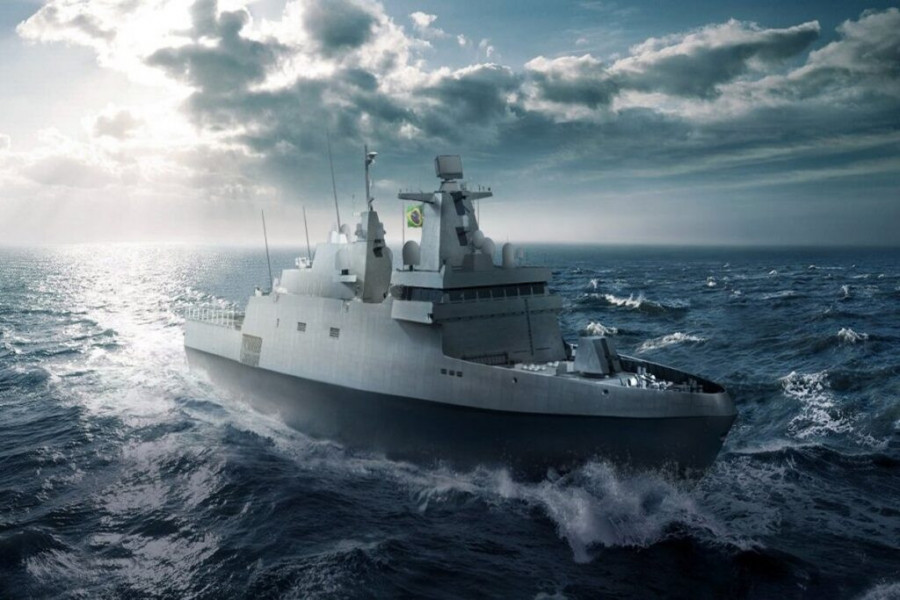
Another historical problem persists, the high concentration of expenses in the Personnel and Social Security section (R$94.6 billion), which is equivalent to 78.2% of the budget resources for the Ministry of Defense.
The section Other Current Expenses (R$14.7 billion) corresponds to 12.1% of the total credits. The Investment section (R$10.8 billion) represents 6.1% of the total. They are the resources to execute the strategic programs of the Forces and one of the groups that suffered the most reductions each year.

INVESTMENTS
In the budget distribution of the Brazilian Ministry of Defense for 2023, investments are listed in descending order of the amounts in the PLOA 2023, with shipbuilding and continuity in investments allocated to the Brazilian Navy leading the total sum of resources.
The start of the construction of the first Tamandaré frigate, in the last quarter of 2022, the continuity of the production of conventional submarines, with the first that gives its name to the class, the Riachuelo, already delivered (and the second about to arrive ), the contractual obligations for the Itaguaí Naval Base and Shipyard (ICN), plus the continuity of investments in the Navy Nuclear Program consume most of these resources. And about time, especially as far as the Surface Fleet was concerned.
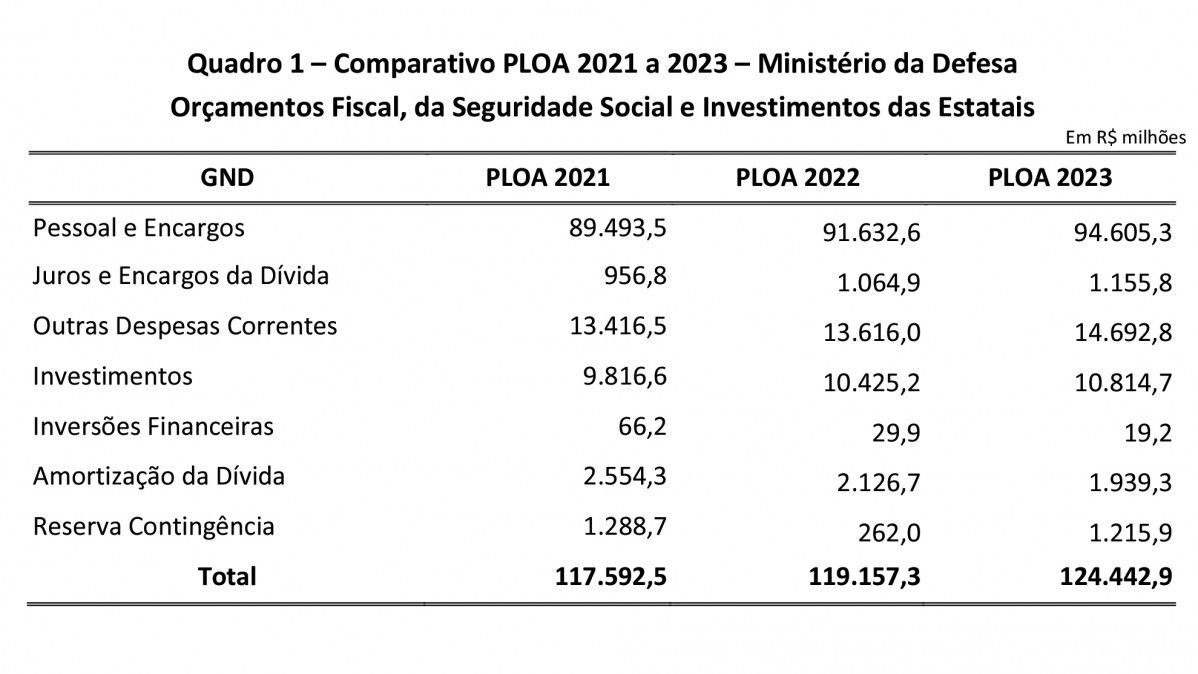
The need to keep old ships operational such as the Constitución frigate, which fired an anti-ship missile again after 32 years, demonstrates the extreme lack of resources of the Brazilian Navy in a vital sector of the Fleet, its Frigate Force, with anti-surface capabilities, anti-submarine and anti-aircraft, whose mission is to protect itself and other ships from a Task Group.
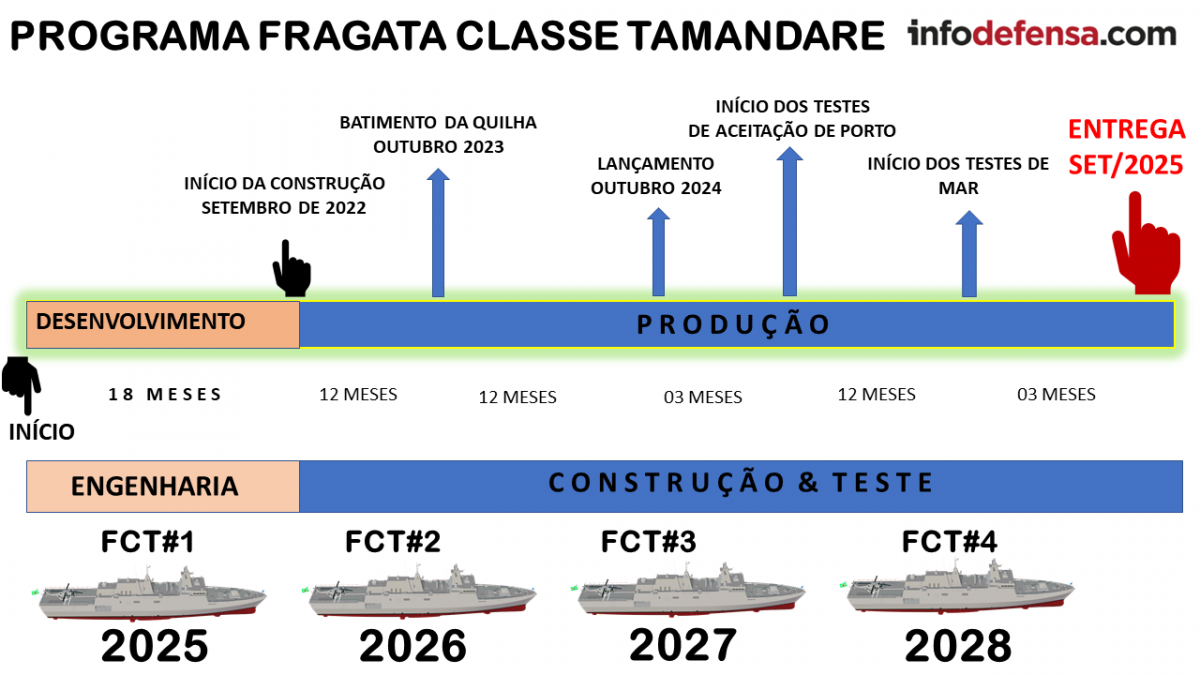
As far as the Air Force (FAB) is concerned, the Saab Gripen fighters and the EmbraerKC-390 Millennium military transports dominate most of the resources, along with the renewal and expansion of the air traffic control and air defense radar network, now capable of operating with IFF (identification friend or foe) in secondary mode, among other 100% national technologies.
Resources are also being allocated to receive a new fleet of H-125 helicopters for training purposes, which will be shared with the Brazilian Navy.
The new H-125 helicopters will have a G500H TXi glass cockpit and VEMD (Vehicle & Engine Multifunction Display) and will be compatible with the use of night vision goggles (NVG). They will also include different types of mission equipment, such as a winch and grappling hook, so that the training of future pilots is as representative of their missions as possible, whether in the FAB or in the Navy.

In the Army, the resources are allocated to the implementation of the Armored Forces project, whose main objective is the acquisition of the Centauro II with a 120 mm cannon, the launch of the tender for the acquisition of 155 mm self-propelled artillery howitzers, the definition of the update configuration and implementation of the modernization program for the MBT Leopard 1A5 BR and the beginning of the modernization works of the 6×6 Cascavel, now called Cascavel NG, in addition to the continuation of the deliveries of 6×6 Guarani, especially the conventional versions equipped with the new Remax 4 system, in addition to the launch of the RFP for the tender of the vehicle armed with a heavy 120 mm mortar on board.
The Border Surveillance and Monitoring System (Sisfron) also maintained its prestige as one of the main programs of the Land Force, having secured important contracts for the years 2023 and 2024.
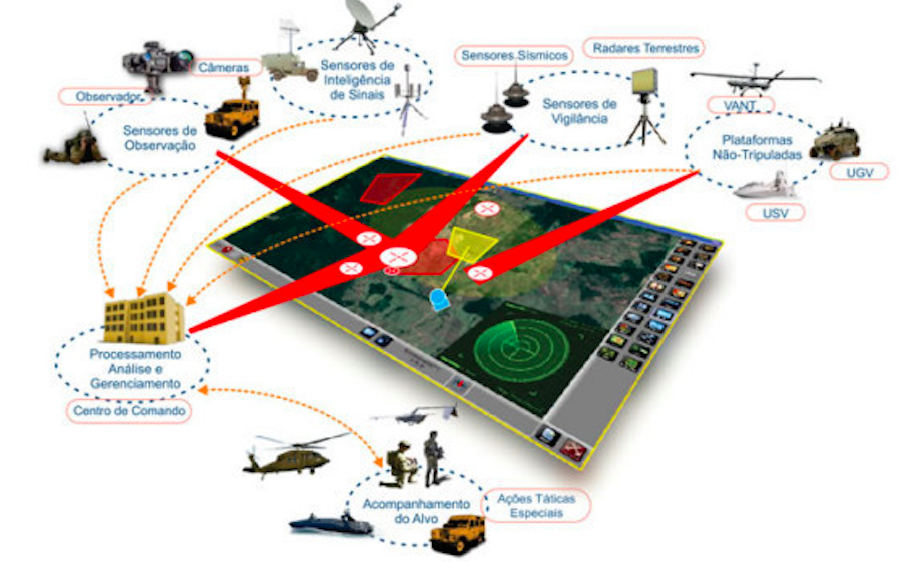
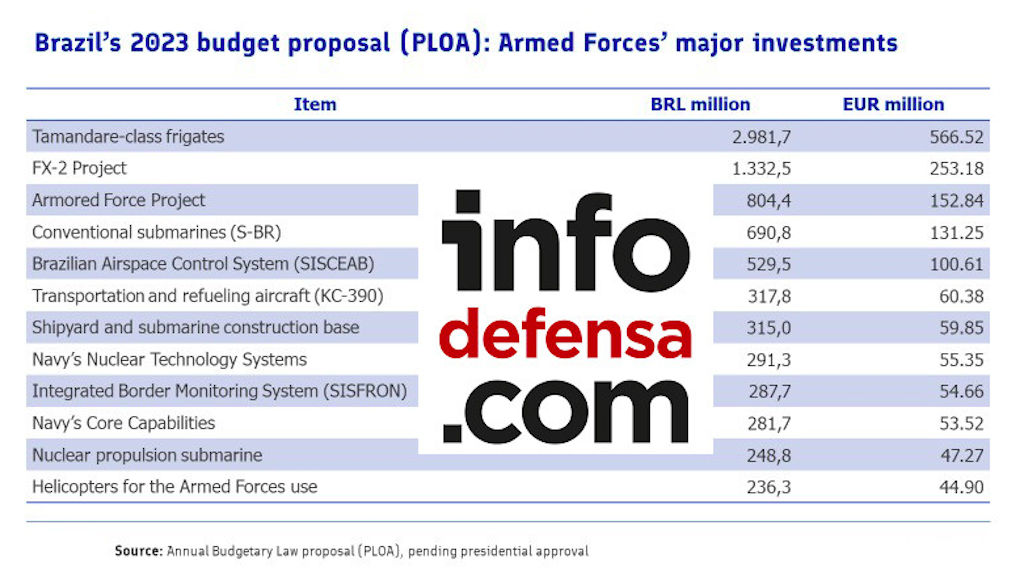
In the National Congress, the parliamentarians expressed concern about the repeated cuts and delays in the Strategic Programs of the Armed Forces, and warned about the importance of rebuilding these resources in the coming fiscal years.
With information from Infodensa

